
Cazorla Natural Park: A Spanish Wilderness Paradise
Explore the untouched beauty of Cazorla Natural Park in Spain, a haven for nature lovers and adventure seekers, featuring rich biodiversity and cultural heritage.
Cazorla Natural Park, nestled in the province of Jaén, Spain, is one of the largest protected areas in the country. This stunning park covers over 200,000 hectares and offers visitors a chance to escape into nature. You can explore its vast landscapes filled with dense forests, rocky cliffs, and sparkling rivers. The park is part of the UNESCO Biosphere Reserve and is a haven for many species of flora and fauna. One of the highlights of visiting Cazorla Natural Park is its diverse range of outdoor activities. Hiking trails of varying difficulty levels crisscross the park, leading to breathtaking viewpoints and hidden waterfalls. Birdwatchers will be in their element, as the park is home to rare bird species like the griffon vulture and golden eagle. For those who enjoy water activities, kayaking and fishing in the clear rivers are popular pastimes. Aside from its natural beauty, Cazorla Natural Park also boasts rich cultural heritage. The charming town of Cazorla, located at the park's entrance, is worth exploring. Here, you can visit historic sites such as the Yedra Castle and the ruins of La Iruela Castle. The local cuisine, featuring dishes made from fresh, local ingredients, is another highlight not to be missed.
Local tips in Cazorla Natural Park
- Best time to visit is during spring or autumn when the weather is mild and the landscape is lush.
- Wear sturdy hiking boots, as some trails can be rocky and uneven.
- Bring binoculars for birdwatching to catch a glimpse of rare species.
- Pack a picnic; there are many scenic spots perfect for a relaxing meal.
- Visit the local tourist center in Cazorla town for maps and information on guided tours.
- Try local cuisine such as 'guiso de patatas' (potato stew) and 'pipirrana' (a refreshing salad).
Cazorla Natural Park: A Spanish Wilderness Paradise
Cazorla Natural Park, nestled in the province of Jaén, Spain, is one of the largest protected areas in the country. This stunning park covers over 200,000 hectares and offers visitors a chance to escape into nature. You can explore its vast landscapes filled with dense forests, rocky cliffs, and sparkling rivers. The park is part of the UNESCO Biosphere Reserve and is a haven for many species of flora and fauna. One of the highlights of visiting Cazorla Natural Park is its diverse range of outdoor activities. Hiking trails of varying difficulty levels crisscross the park, leading to breathtaking viewpoints and hidden waterfalls. Birdwatchers will be in their element, as the park is home to rare bird species like the griffon vulture and golden eagle. For those who enjoy water activities, kayaking and fishing in the clear rivers are popular pastimes. Aside from its natural beauty, Cazorla Natural Park also boasts rich cultural heritage. The charming town of Cazorla, located at the park's entrance, is worth exploring. Here, you can visit historic sites such as the Yedra Castle and the ruins of La Iruela Castle. The local cuisine, featuring dishes made from fresh, local ingredients, is another highlight not to be missed.
When is the best time to go to Cazorla Natural Park?
Iconic landmarks you can’t miss
Parque Natural de las Sierras de Cazorla, Segura y Las Villas
Explore the breathtaking landscapes, diverse wildlife, and rich cultural heritage at Parque Natural de las Sierras de Cazorla, a must-see destination for nature lovers.
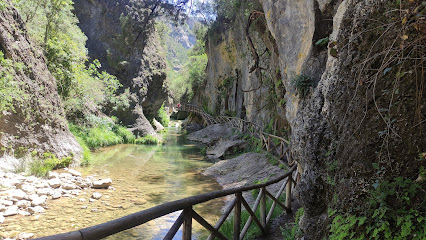
Parque Cinegético Collado del Almendral
Explore the diverse ecosystems of Parque Cinegético Collado del Almendral, a nature preserve perfect for birdwatching and peaceful nature walks.
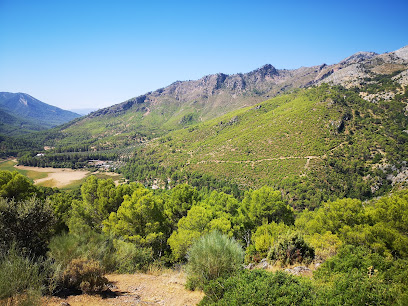
Fortaleza de la Mota
Explore the historic Fortress of La Mota in Alcalá la Real, a spectacular monument offering stunning views and a glimpse into Spain's medieval past.

Castillo De La Iruela
Discover the enchanting Castillo De La Iruela, a historic castle offering breathtaking views of the Sierra de Cazorla and a glimpse into Spain's medieval heritage.
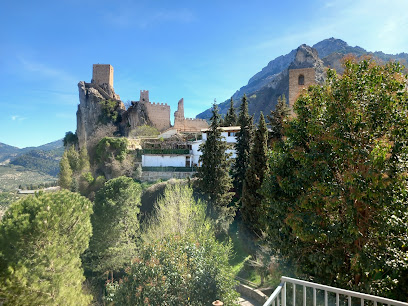
Torre del Vinagre
Explore Torre del Vinagre: A captivating natural history museum in La Iruela, Jaén, surrounded by stunning natural landscapes and rich biodiversity.
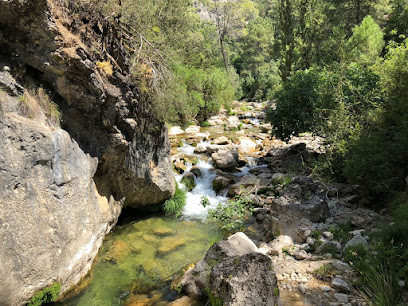
Despeñaperros Natural Park
Explore the breathtaking landscapes and rich biodiversity of Despeñaperros Natural Park, a must-visit nature preserve in Jaén, Spain.
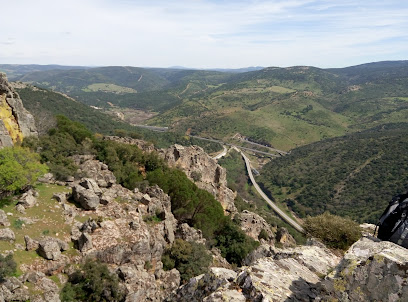
Castillo de la Yedra
Explore the timeless beauty and rich history of Castillo de la Yedra, a majestic medieval castle nestled in Cazorla Natural Park.
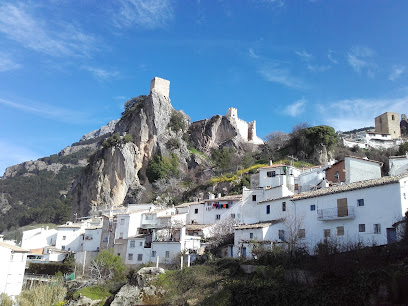
Parador de Cazorla
Experience the stunning landscapes and rich culture of Sierra de Cazorla at Parador de Cazorla, a luxurious hotel surrounded by nature's beauty.

Bosque encantado de Higueras
Explore the magical Bosque Encantado de Higueras, a serene national forest in Jaén, Spain, perfect for hiking, wildlife watching, and nature photography.
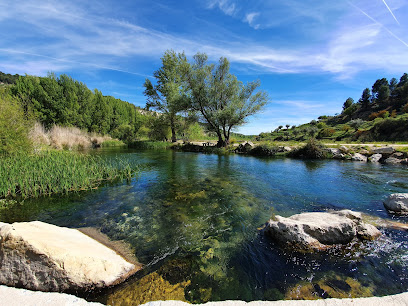
Museo Zabaleta - Miguel Hernández
Explore Museo Zabaleta in Quesada, a cultural treasure showcasing the art of Miguel Hernández amidst the beauty of Sierra de Cazorla.
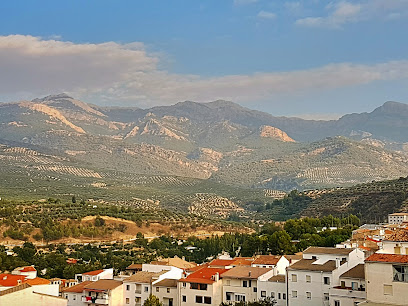
Inicio de Senda – Cerrada del Utrero
Discover breathtaking trails and stunning vistas at Inicio de Senda – Cerrada del Utrero, a premier hiking destination in Cazorla, Jaén, Spain.
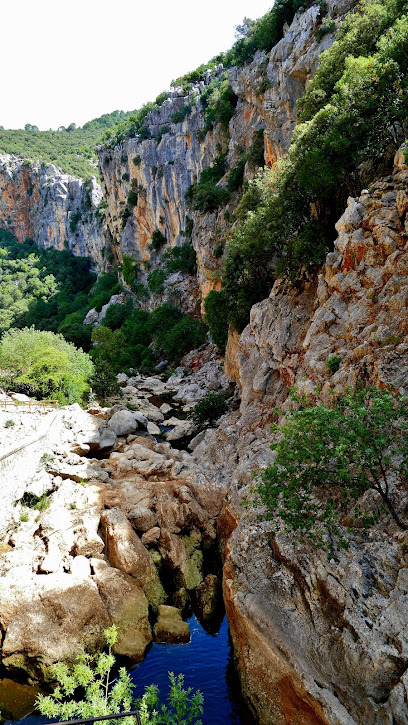
Jump Bodies
Discover the breathtaking landscapes and unique geological wonders of Jump Bodies in La Iruela, a perfect destination for nature lovers and adventure seekers.
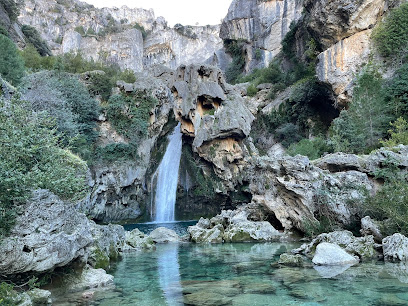
las Sierras de Cazorla, Segura y las Villas Natural Park
Explore the breathtaking landscapes and rich biodiversity of las Sierras de Cazorla, Segura y las Villas Natural Park, a natural paradise in Andalusia.
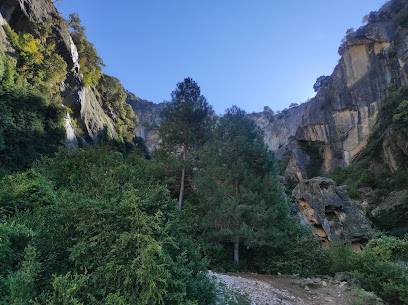
Cazorla Camping Montillana
Discover the serenity of Cazorla Camping Montillana, a family-friendly campground nestled in the stunning Sierra de Cazorla, perfect for outdoor adventures and relaxation.
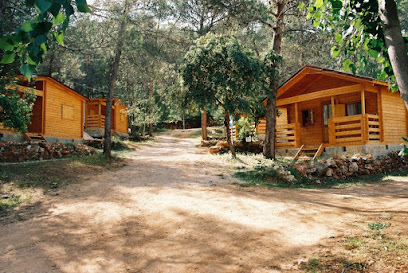
Procanyoning
Experience the ultimate adventure in Cazorla with Procanyoning, where thrilling canyoning awaits amidst stunning natural beauty.
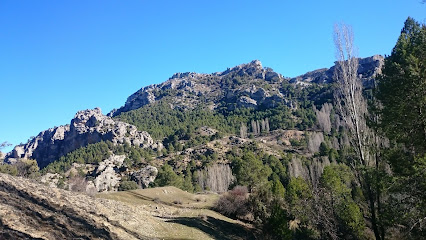
Unmissable attractions to see
Parque Cinegético Collado del Almendral
Discover the enchanting landscapes and diverse wildlife at Parque Cinegético Collado del Almendral, a premier nature preserve in Jaén, Spain.
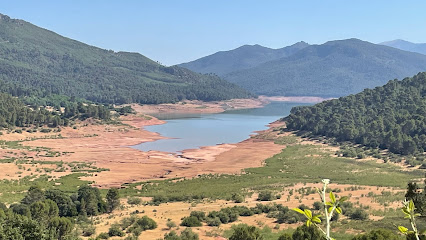
Torre del Vinagre
Explore Torre del Vinagre in Jaén, a natural history museum that immerses you in the region's biodiversity and geological wonders.
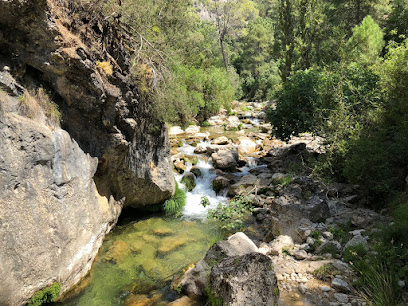
Río Borosa
Explore Río Borosa, a stunning natural park in Jaén, Spain, where pristine waters and breathtaking landscapes await every nature lover and adventurer.
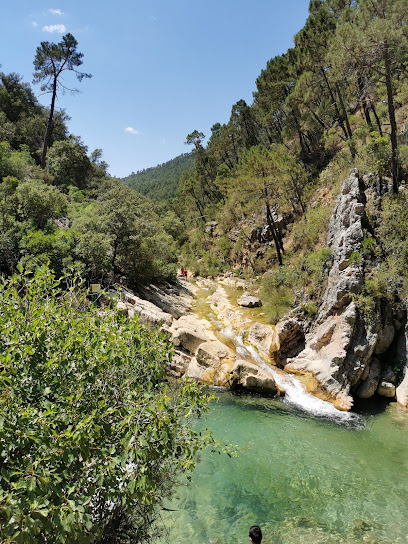
Charco De La Pringue
Experience natural beauty and adventure at Charco De La Pringue, a stunning hiking and swimming paradise in Jaén, Spain.
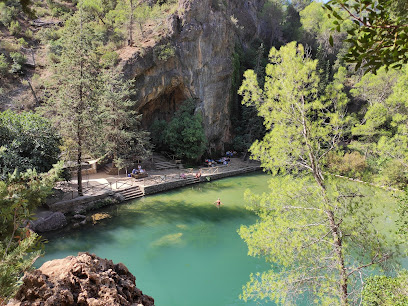
Parque Natural Sierra Mágina
Explore the breathtaking landscapes of Parque Natural Sierra Mágina, a nature preserve in Jaén offering stunning hiking trails and rich biodiversity.
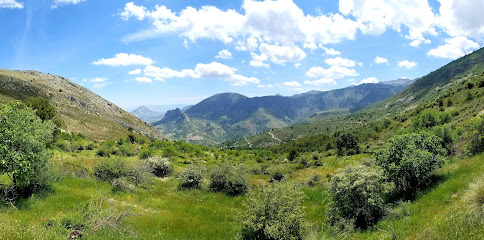
Ruinas de la Iglesia de Santa María de Gracia
Explore the historical Ruins of the Iglesia de Santa María de Gracia in Cazorla, where rich heritage meets stunning gothic architecture.
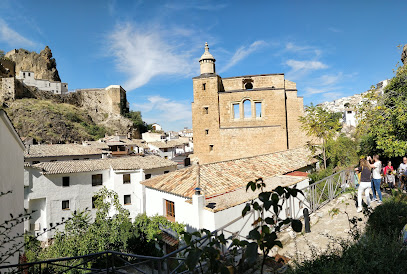
Nacimiento del rio Guadalquivir
Discover the stunning Nacimiento del río Guadalquivir, where nature meets tranquility in the heart of Andalusia, a must-visit for outdoor enthusiasts.
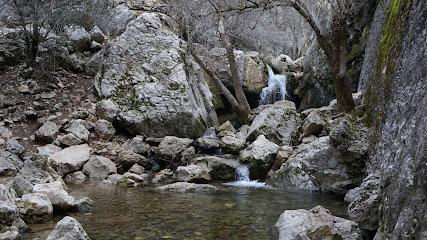
Nacimiento del rio Guadalquivir
Explore the stunning Nacimiento del río Guadalquivir, a breathtaking natural attraction in Jaén, Spain, perfect for hiking and nature lovers.
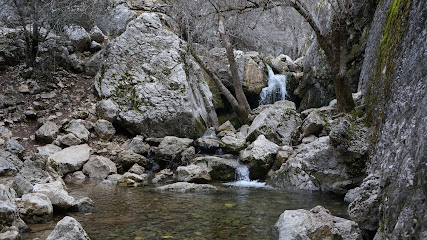
Puente de las Herrerias
Discover the stunning Puente de las Herrerias, a bridge that offers breathtaking views and hiking trails in the Sierra de Cazorla.
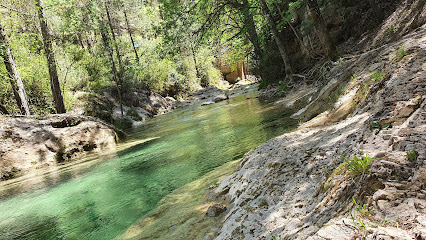
Castillo de la Yedra
Discover the stunning Castillo de la Yedra, where history, architecture, and breathtaking views converge in the heart of Cazorla.
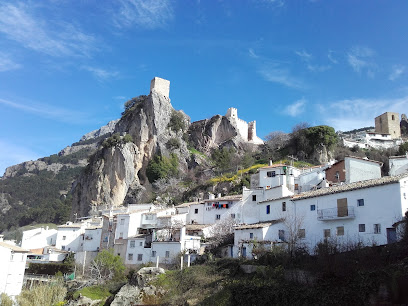
Bóvedas Del Rio
Explore Bóvedas Del Rio: A breathtaking tourist attraction in Cazorla, Spain, blending nature's beauty with rich historical significance.
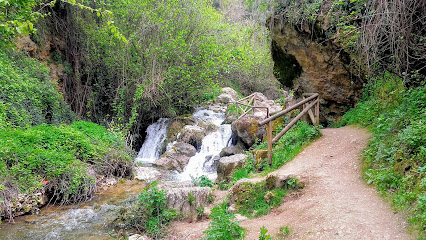
Cascada De Linarejos
Explore the breathtaking Cascada De Linarejos in Cazorla, a natural waterfall oasis perfect for hiking and relaxation amidst stunning landscapes.
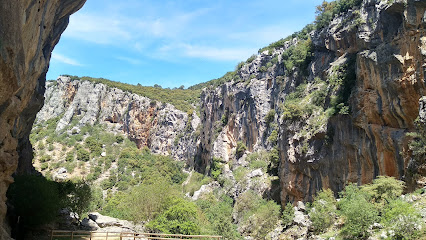
VFT Sendero Cerezuelo (Cazorla)
Discover the enchanting VFT Sendero Cerezuelo, a breathtaking hiking trail in Cazorla, perfect for nature lovers and adventure seekers.

Cascada de Guazalamanco
Experience the beauty of Cascada de Guazalamanco, a stunning waterfall park in Jaén that captivates with its natural charm and serene atmosphere.
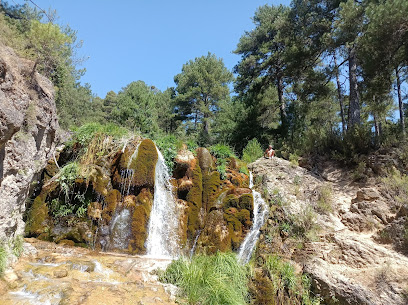
Puerto de Las Palomas
Experience the breathtaking views from Puerto de Las Palomas, a stunning observation deck in La Iruela, Jaén, renowned for its natural beauty.
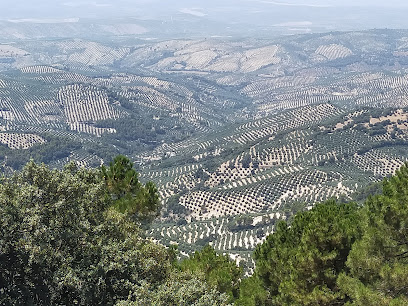
Essential places to dine
Cazorla Restaurantes
Experience authentic Andalusian cuisine at Cazorla Restaurantes in Tetuán, Madrid - where tapas and tradition meet.
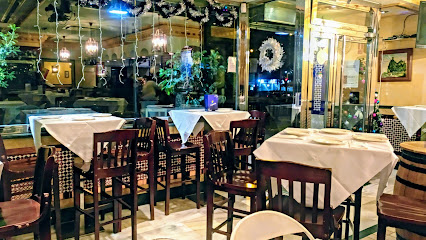
Cazorla
Discover Cazorla: The Heart of Tapas Culture in Madrid – Where Every Bite Tells a Story.
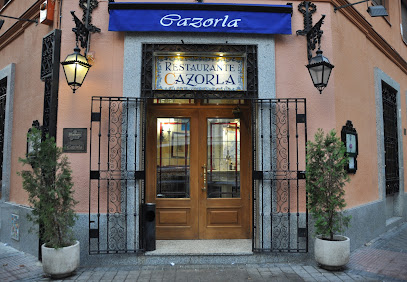
Mesón Don Chema
Experience authentic Spanish cuisine at Mesón Don Chema in Cazorla – where tradition meets taste in a warm and inviting atmosphere.
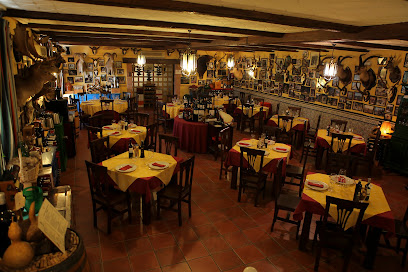
El Tranco
Discover El Tranco in Jaén: where delightful cuisine meets exhilarating amusement for an unforgettable family outing.
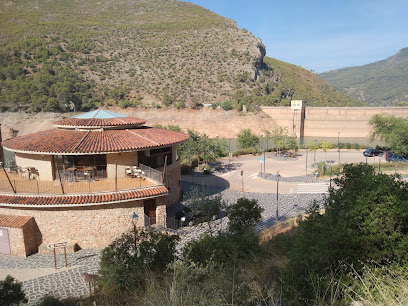
Hotel Spa Rural Coto del Valle de Cazorla
Experience tranquility at Hotel Spa Rural Coto del Valle de Cazorla - your ultimate escape into nature's embrace.
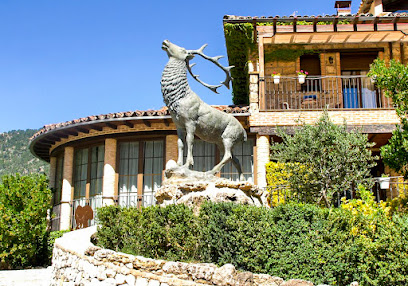
Restaurante La Yedra
Experience authentic Spanish cuisine amidst the breathtaking landscapes of Cazorla at Restaurante La Yedra.
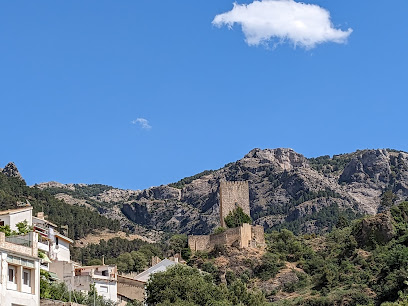
Restaurante Montero Cazorla Alcala 261
Experience authentic Spanish tapas at Restaurante Montero Cazorla in Madrid - where culinary tradition meets modern flavor.
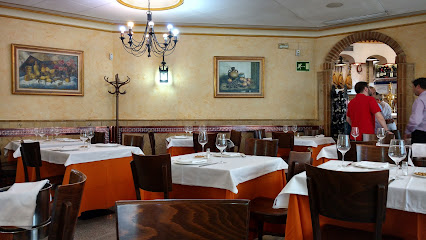
Sercotel Ciudad de Cazorla
Experience comfort and nature at Sercotel Ciudad de Cazorla - your perfect retreat in stunning Jaén.

Asador La Bolera, restaurante en Jaén
Experience authentic Andalusian cuisine at Asador La Bolera - a culinary gem nestled in the heart of Jaén offering exquisite grilled dishes.
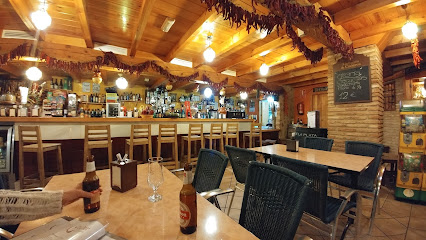
Parador de Cazorla
Experience luxury and nature at Parador de Cazorla - your gateway to adventure in Sierra de Cazorla National Park.

Taberna Quinito
Discover authentic Andalusian flavors at Taberna Quinito in Cazorla – a culinary treasure in Spain's beautiful Jaén region.
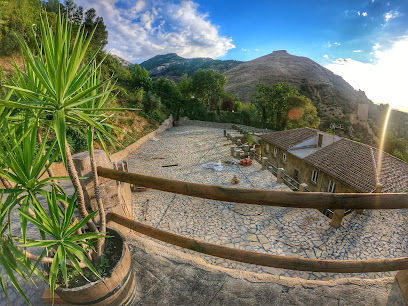
Hotel Restaurante El Curro de la Sierra de Cazorla
Discover the serenity of nature at Hotel Restaurante El Curro, where comfort meets culinary delight in the heart of Sierra de Cazorla.
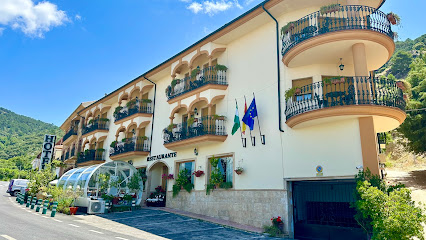
Chiringuito Cerrada del Utrero
Discover Chiringuito Cerrada del Utrero: A charming restaurant offering local cuisine amidst breathtaking nature in Jaén's scenic landscapes.
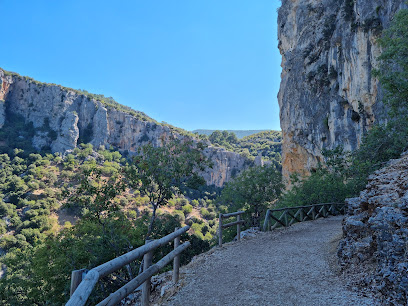
Pizza Lara (Cazorla)
Discover authentic Italian flavors at Pizza Lara in Cazorla - where every slice tells a story.
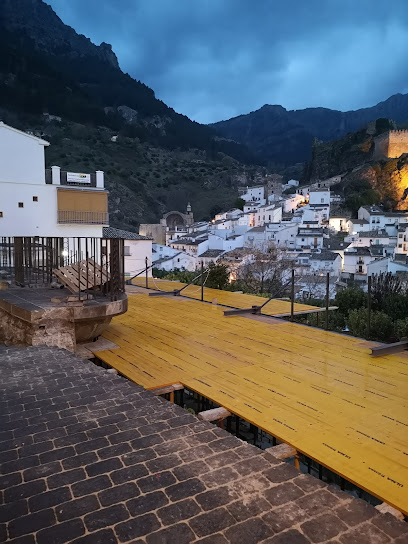
Antojitos Mexican Curious (reserve SOLO WhatsApp)
Experience authentic Mexican cuisine in Cazorla at Antojitos Mexican Curious - where flavor meets tradition in every dish.
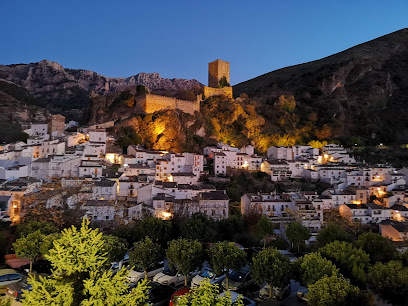
Markets, malls and hidden boutiques
las Sierras de Cazorla, Segura y las Villas Natural Park
Explore las Sierras de Cazorla, Segura y las Villas Natural Park - a natural paradise of diverse wildlife, stunning landscapes, and rich cultural heritage.
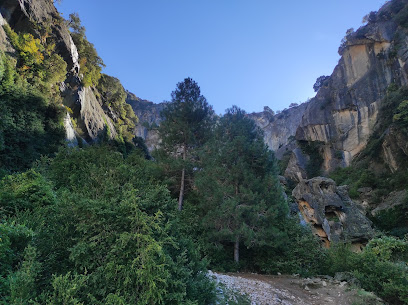
Productos Sierra de Cazorla
Discover the authentic flavors and rich traditions of Sierra de Cazorla at Productos Sierra de Cazorla, the heart of local craftsmanship.
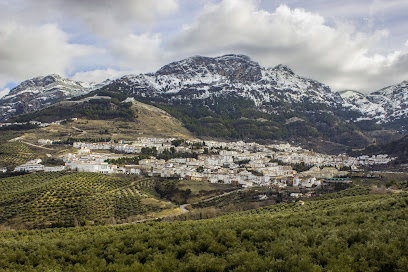
La Despensa Del Parque Natural
Discover unique souvenirs and local delicacies at La Despensa Del Parque Natural, a charming store in Cazorla, Spain.
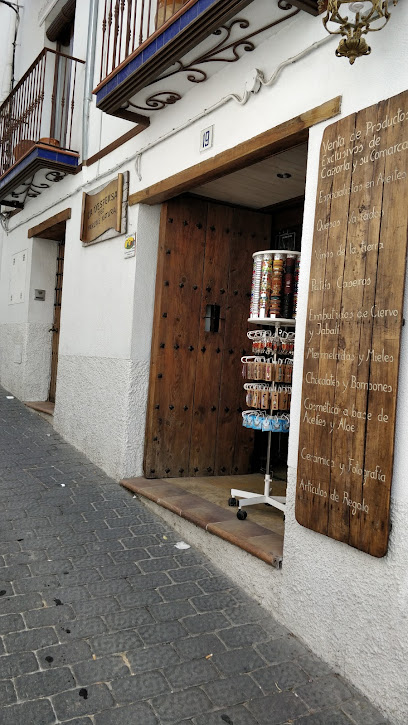
Essential bars & hidden hideouts
Parque Natural de las Sierras de Cazorla, Segura y Las Villas
Immerse yourself in the stunning natural beauty and diverse wildlife of Parque Natural de las Sierras de Cazorla, Segura y Las Villas, a true paradise for outdoor enthusiasts.
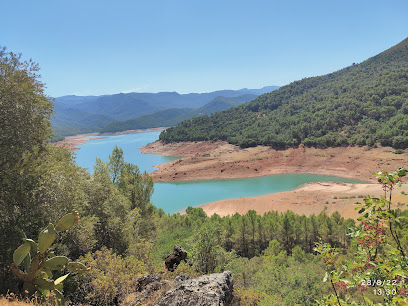
Cazorla Restaurantes
Experience the authentic taste of Andalusian cuisine at Cazorla Restaurantes in Madrid, a delightful tapas haven for food lovers.
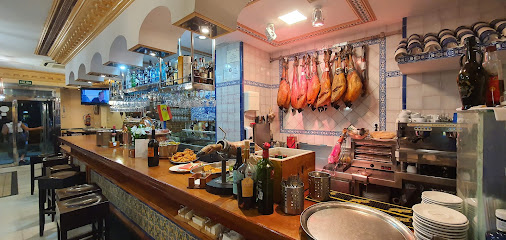
Mesón Don Chema
Experience authentic Spanish cuisine at Mesón Don Chema in Cazorla, where local flavors and warm hospitality create a delightful dining adventure.

Cazorla
Experience the true flavors of Andalusian cuisine at Cazorla, a charming restaurant in Madrid that delights with its authentic tapas and warm atmosphere.
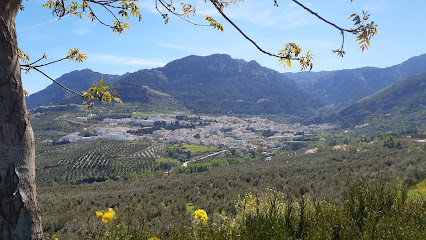
Charco De La Pringue
Experience the beauty of Charco De La Pringue, a stunning swimming lake in Jaén, offering hiking trails and serene nature perfect for relaxation.
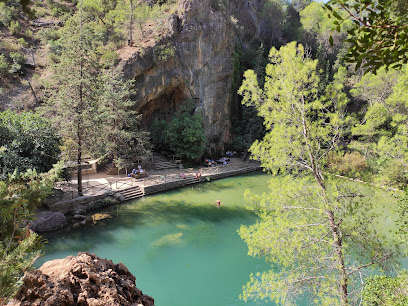
Restaurante La Yedra
Discover the heart of Andalusian cuisine at Restaurante La Yedra, a Cazorla treasure for authentic flavors and warm hospitality.
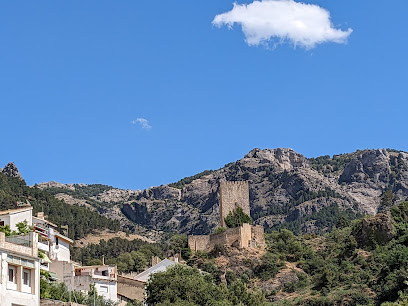
Bar las Viñas
Experience the vibrant atmosphere and authentic flavors of Cazorla at Bar Las Viñas, your go-to tapas bar for a delightful culinary journey.
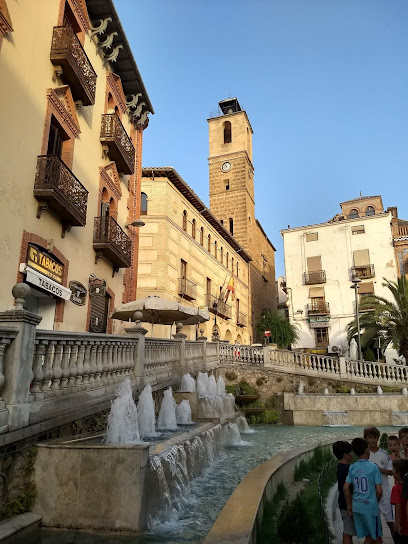
Parador de Cazorla
Discover the natural beauty and cultural richness of Parador de Cazorla, an idyllic retreat in the Sierra de Cazorla Natural Park.

Bóvedas Del Rio
Discover the serene beauty and rich history of Bóvedas Del Rio in Cazorla, a picturesque escape in Spain's stunning landscapes.
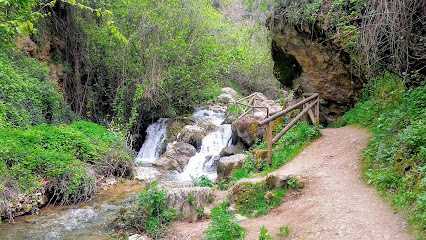
Taberna Quinito
Experience the heart of Spanish cuisine at Taberna Quinito in Cazorla, where tradition meets flavor in an inviting atmosphere.
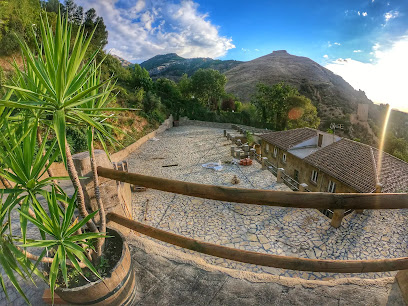
Hotel Restaurante El Curro de la Sierra de Cazorla
Discover tranquility and local flavors at Hotel Restaurante El Curro, your gateway to the stunning Sierra de Cazorla National Park.
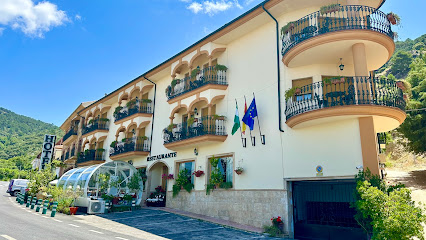
Chiringuito Cerrada del Utrero
Experience the taste of local cuisine in the heart of nature at Chiringuito Cerrada del Utrero, a must-visit restaurant and hiking area in Jaén.
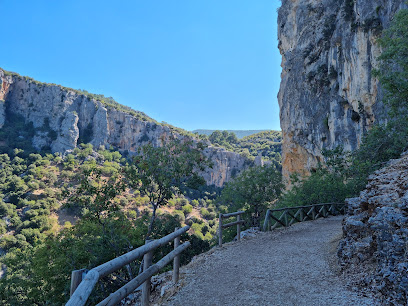
Restaurante Lusco
Experience the heart of Spanish cuisine at Restaurante Lusco in Cazorla, offering exquisite tapas in a charming setting.
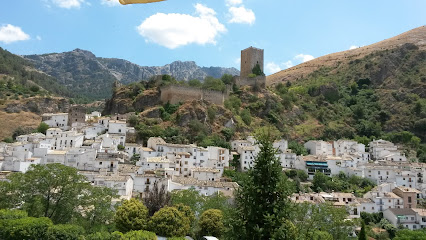
Rincon Serrano
Experience the vibrant flavors of Spain at Rincon Serrano, Cazorla's beloved tapas bar, where every dish tells a story.
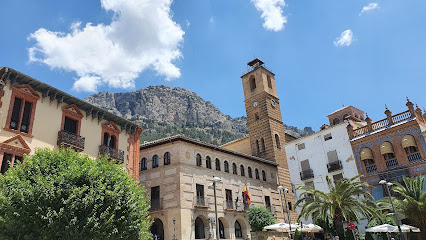
La Casa de las Bicicletas
Experience the artistic charm of La Casa de las Bicicletas, a unique hotel and art gallery in the heart of Cazorla, Jaén.
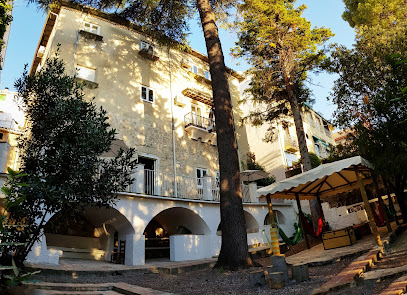
Local Phrases about Cazorla Natural Park
-
- HelloHola
[oh-la] - GoodbyeAdiós
[ah-dee-ohs] - YesSí
[see] - NoNo
[no] - Please/You're welcomePor favor/De nada
[por fah-vor/deh nah-dah] - Thank youGracias
[grah-thyahs] - Excuse me/SorryPerdón/Lo siento
[pehr-dohn/loh syen-toh] - How are you?¿Cómo estás?
[koh-moh ehs-tahs] - Fine. And you?Bien. ¿Y tú?
[byen. ee too] - Do you speak English?¿Hablas inglés?
[ah-blahs een-glehs] - I don't understandNo entiendo
[noh ehn-tyen-doh]
- HelloHola
-
- I'd like to see the menu, pleaseMe gustaría ver la carta, por favor
[meh goo-stah-ree-ah vehr lah kahr-tah por fah-vor] - I don't eat meatNo como carne
[noh koh-moh kahr-neh] - Cheers!¡Salud!
[sah-lood] - I would like to pay, pleaseMe gustaría pagar, por favor
[meh goo-stah-ree-ah pah-gahr por fah-vor]
- I'd like to see the menu, pleaseMe gustaría ver la carta, por favor
-
- Help!¡Ayuda!
[ah-yoo-dah] - Go away!¡Vete!
[veh-teh] - Call the Police!¡Llama a la policía!
[yah-mah ah lah poh-lee-syah] - Call a doctor!¡Llama a un médico!
[yah-mah ah oon meh-dee-koh] - I'm lostEstoy perdido/a
[ehs-toy pehr-dee-doh/dah] - I'm illEstoy enfermo/a
[ehs-toy ehn-fehr-moh/dah]
- Help!¡Ayuda!
-
- I'd like to buy...Me gustaría comprar...
[meh goo-stah-ree-ah kohm-prahr] - I'm just lookingSolo estoy mirando
[soh-loh ehs-toy meer-ahn-doh] - How much is it?¿Cuánto cuesta?
[kwan-toh kwehs-tah] - That's too expensiveEsto es demasiado caro
[ehs-toh ehs deh-mah-syah-doh kah-roh] - Can you lower the price?¿Puede rebajar el precio?
[pweh-deh reh-bah-hahr ehl pree-syoh]
- I'd like to buy...Me gustaría comprar...
-
- What time is it?¿Qué hora es?
[keh oh-rah ehs] - It's one o'clockEs la una en punto
[ehs lah oo-nah ehn poon-toh] - Half past (10)Las diez y media
[lahs dyehs ee meh-dee-ah] - MorningMañana
[mah-nyah-nah] - AfternoonTarde
[tahr-deh] - EveningNoche
[noh-cheh] - YesterdayAyer
[ah-yehr] - TodayHoy
[oy] - TomorrowMañana
[mah-nyah-nah] - 1Uno
[oo-noh] - 2Dos
[dohs] - 3Tres
[trehs] - 4Cuatro
[kwah-troh] - 5Cinco
[theen-koh] - 6Seis
[sehs] - 7Siete
[syeh-teh] - 8Ocho
[oh-choh] - 9Nueve
[nweh-veh] - 10Diez
[dyehs]
- What time is it?¿Qué hora es?
-
- Where's a/the...?¿Dónde está...?
[dohn-deh ehs-tah] - What's the address?¿Cuál es la dirección?
[kwal ehs lah dee-rehk-syon] - Can you show me (on the map)?¿Puedes mostrarme (en el mapa)?
[pweh-dehs mohs-trar-meh ehn ehl mah-pah] - When's the next (bus)?¿Cuándo es el próximo (autobús)?
[kwan-doh ehs ehl proh-ksy-moh ow-toh-boos] - A ticket (to ....)Un billete (a ...)
[oon beel-ye-teh ah ...]
- Where's a/the...?¿Dónde está...?
History of Cazorla Natural Park
-
Long before the Romans set foot on the Iberian Peninsula, the region now known as Cazorla Natural Park was inhabited by ancient Iberian tribes. Archaeological findings show that these early settlers made their homes in the fertile valleys and rugged mountains, leaving behind remnants of their fortifications, stone tools, and burial sites. These artifacts offer a glimpse into the life and customs of a civilization that thrived in harmony with the natural landscape.
-
The Roman Empire extended its reach to the area of Cazorla in the 2nd century BC. The Romans appreciated the strategic importance and natural resources of the region. They established settlements, roads, and aqueducts, some of which can still be seen today. The region's rich olive groves and fertile lands were cultivated extensively under Roman rule, laying the groundwork for the agricultural practices that continue to this day.
-
During the 8th century, the Moors conquered the Iberian Peninsula, bringing significant cultural and architectural changes to Cazorla. The Moors built fortresses, watchtowers, and irrigation systems that transformed the landscape. The Castillo de La Iruela, a stunning Moorish castle perched on a rocky outcrop, stands as a testament to their architectural prowess and strategic acumen. The Moorish influence is also evident in the region's agriculture, particularly in the cultivation of rice and saffron.
-
The Reconquista, a series of campaigns by Christian states to recapture territory from the Moors, reached Cazorla in the 13th century. The region was a significant battleground, and the Christian forces constructed numerous castles and fortifications to secure their hold. The Castillo de Yedra, located in the town of Cazorla, is a prime example of this period's military architecture. The Christian reclamation also brought about the establishment of monasteries and churches, which played a crucial role in the region's cultural and religious life.
-
The 15th and 16th centuries marked a period of economic prosperity for Cazorla, spurred by Spain's Age of Exploration. The wealth flowing in from the New World invigorated the local economy, leading to the expansion of agriculture and trade. Olive oil production became a cornerstone of the region's economy, a legacy that endures to this day. The Renaissance also left its mark on Cazorla’s architecture, with several palatial homes and public buildings reflecting the era's artistic and cultural renaissance.
-
The 20th century brought about a growing awareness of the need to preserve the natural beauty and biodiversity of Cazorla. In 1960, Cazorla Natural Park was established, becoming one of Spain's first protected natural areas. Conservation efforts have focused on protecting native species, restoring natural habitats, and promoting sustainable tourism. The park is now a sanctuary for a diverse array of flora and fauna, including the endangered Iberian lynx and the Spanish imperial eagle.
Cazorla Natural Park Essentials
-
Cazorla Natural Park is located in the Jaén province of Andalusia, Spain. The nearest major city is Granada, which has an international airport (Federico García Lorca Granada-Jaén Airport). From Granada, you can rent a car or take a bus to the town of Cazorla, which serves as the main gateway to the park. The drive takes approximately 2 hours. Alternatively, you can also reach Cazorla from Madrid by taking a train to Linares-Baeza and then a bus to Cazorla.
-
Within Cazorla Natural Park, the best way to explore is by car or on foot. Several car rental agencies operate in the nearby towns. There are also local bus services that connect the main towns and villages within the park, but they may not be frequent. For a more immersive experience, consider hiring a local guide for hiking and off-road tours.
-
The official currency in Spain is the Euro (EUR). Credit cards are widely accepted in hotels, restaurants, and shops in and around Cazorla. However, it is advisable to carry some cash, especially for small purchases and in rural areas. ATMs are available in the town of Cazorla, but it is wise to withdraw sufficient cash before heading into the more remote areas of the park.
-
Cazorla Natural Park is generally safe for tourists. However, standard precautions should be taken. Avoid leaving valuables in your car, especially in remote parking areas. Petty theft, while uncommon, can occur in crowded places. There are no specific high-crime areas in the park, but it is always best to stay vigilant and aware of your surroundings.
-
In case of emergency, dial 112 for immediate assistance. The local police station and medical facilities are available in the town of Cazorla. It is recommended to have travel insurance that covers medical emergencies. For minor health issues, there are pharmacies in Cazorla where you can purchase over-the-counter medications.
-
Fashion: Do wear comfortable and practical clothing suitable for outdoor activities. Avoid wearing high heels or flip-flops in the park. Religion: Do respect local customs and traditions, especially when visiting religious sites in nearby towns. Public Transport: Do be respectful and give up your seat to elderly passengers. Don't eat or drink on public transport. Greetings: Do greet people with a handshake. A friendly 'Hola' is also appreciated. Eating & Drinking: Do try local delicacies and accept food offerings graciously. Don't refuse hospitality, as it is considered impolite.
-
To experience Cazorla Natural Park like a local, visit the local markets in the town of Cazorla where you can buy fresh produce and traditional Andalusian goods. Engage with locals, as they are often friendly and willing to share stories about the park's history and culture. Don't miss hiking the Rio Borosa Trail, which offers stunning views and a chance to see local wildlife. For a unique experience, try staying in a rural guesthouse or 'casa rural' to get a taste of traditional Spanish hospitality.
Trending Landmarks in Cazorla Natural Park
-
Parque Natural de las Sierras de Cazorla, Segura y Las Villas
-
Parque Cinegético Collado del Almendral
-
Fortaleza de la Mota
-
Castillo De La Iruela
-
Torre del Vinagre
-
Despeñaperros Natural Park
-
Castillo de la Yedra
-
Parador de Cazorla
-
Bosque encantado de Higueras
-
Museo Zabaleta - Miguel Hernández
-
Inicio de Senda – Cerrada del Utrero
-
Jump Bodies
-
las Sierras de Cazorla, Segura y las Villas Natural Park
-
Cazorla Camping Montillana
-
Procanyoning
Nearby Cities to Cazorla Natural Park
-
Things To Do in Almeria
-
Things To Do in Alicante
-
Things To Do in Málaga
-
Things To Do in Toledo
-
Things To Do in Valencia
-
Things To Do in Madrid
-
Things To Do in Ronda
-
Things To Do in Teruel
-
Things To Do in Seville
-
Things To Do in Catalan Bay
-
Things To Do in Moorish Castle
-
Things To Do in Casemates Square
-
Things To Do in Gibraltar
-
Things To Do in Main Street
-
Things To Do in Alameda Botanic Gardens











